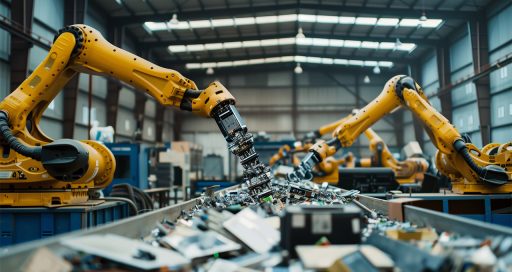New technologies can improve productivity, provided that organisational changes are made in businesses. Axians has developed a three-pronged approach which involves organising, guiding and automating.
![]()
Increased productivity is one of the keys to corporate competitiveness. However, the path to achieving it is not always easy to follow, and the obstacles encountered along the way are often linked to methods and processes. “Certain things hinder productivity gains. By that I mean work organisation, which is often silo-based in many companies, the need to constantly switch context, and the fact that content and information is increasingly difficult to find,” says Mathias Alleyn, workspace solution strategist at Axians Belgium.
“The key is to enhance the end-user or employee experience.”
Sources of productivity growth are typically found in repetitive and low value-added activities. Sadly, there are many such activities still around and they have a demotivating effect on employees. Task automation can offer a solution. But it is too often overlooked by businesses.
Beyond the image we might have of the technology as a threat, workflow automation is beneficial not just to companies but also to employees. By offloading certain laborious and time-consuming jobs, staff can save valuable time, allowing them to focus on more interesting and more productive activities.
One-stop shop
“In many cases, IT is a facilitator that helps meet most business goals, including productivity improvement. But organisational change needs to happen first,” states Alleyn. In order to address this, the VINCI Energies ICT brand Axians has developed a structured approach based on three key concepts: organising, guiding and automating the workplace. The latter consists of four main components: users, devices (computers, smartphones, etc.), apps and data. “While the last three components cover a wide variety of forms, they don’t present major difficulties as far as increased productivity is concerned. What’s most important is to enhance the end-user or employee experience. This means making workspaces a kind of one-stop shop where all tasks can be easily carried out,” explains the Axians specialist.
Alleyn goes on to point out that, “Although the solution focuses primarily on office working, in some cases it can also be useful to factory workers. It all depends on the tasks they need to perform. Once we’ve analysed needs, we can customise the automation aspect.”
Micro apps
Following the work organisation phase, the next steps involve optimally guiding users in their various tasks and automating the performance of these tasks. “What we’re talking about is similar to the systems developed by apps like Facebook, Twitter and LinkedIn which push information that matches your needs or expectations,” explains Alleyn.
With this system, micro apps provide users with information (alerts, notifications, etc.) based on workflows linked to the actions they need to perform using Workday, Salesforce or Office 365, for example. The tool, an extremely effective driver of productivity, is referred to within Axians as “Intelligent Modern Workspace”.
“The automation process is then extended to all appropriate tasks. To do this, several applications may need to be created,” notes Alleyn who developed the solution for several clients, including an engineering firm.
“In this particular firm, engineers and designers use resource-intensive apps on expensive and cumbersome workstations. When extreme events like the lockdown caused by the Covid 19 pandemic prevent access to offices, people like this are unable to work.”
To resolve the problem, Mathias Alleyn’s team decided to centralise all the relevant users on a single “Workspace” platform which provides access to all types of application (mobile, local, SaaS, web, Virtual Desktop Infrastructure) on any user device (Mac, Linux, Windows or Android).
“By having all the power of the computer at the back end rather than on individual workstations, the platform makes the most resource-intensive 3D CAD apps available to the most demanding users,” states the workspace solution strategist, who highlights that this type of environment is accessible 24/7.
The final advantage of this type of solution, says Alleyn, is that, “With micro apps, the platform’s intelligent features make it possible to customise each employee’s work, saving one to two hours of working time per week and per person. The client already plans to automate further workflows using the platform.”
11/03/2021




